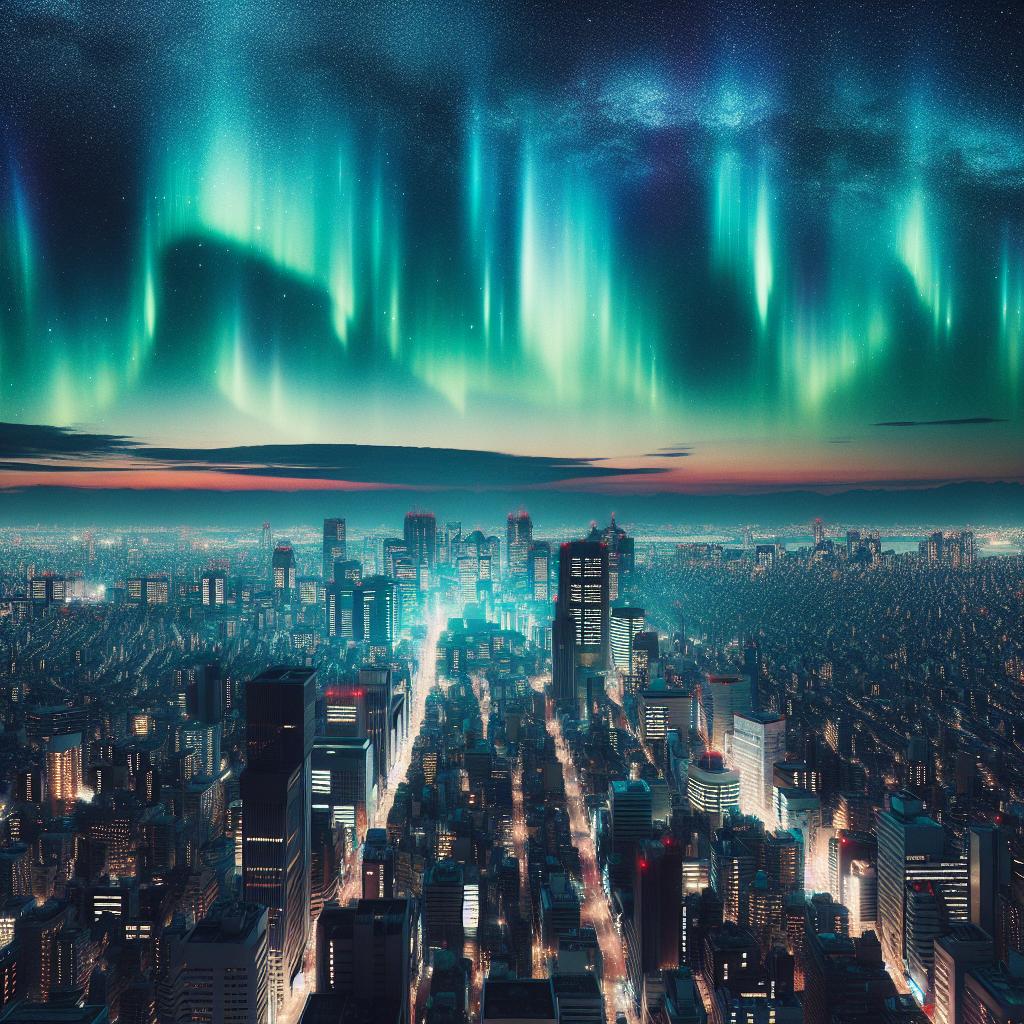

Northern Lights Overhead City
City officials are gearing up for an enchanting light show as the Northern Lights are expected to be visible in several continental U.S. states this Friday night. This stunning experience comes after a series of powerful solar flares that have led to geomagnetic storms, perfect for viewers hoping to catch a glimpse of this natural spectacle.
Earlier in the week, the sun produced an impressive X7.1 solar flare on Wednesday followed by an even more powerful X9.0 flare on Thursday. This recent flare is the strongest seen in the sun’s current solar cycle, which is known as Solar Cycle 25. Notably, the flare that brought forth May’s bright auroras was charged with an X8.7 measurement.
These solar flares can result in coronal mass ejections, which are bursts of solar material that are responsible for creating Northern Lights sightings. Over the weekend, a pair of these CMEs is projected to affect Earth, occurring between Friday and Sunday.
The National Oceanic and Atmospheric Administration (NOAA) initially issued storm watches ranging from minor to strong geomagnetic storms for Thursday through Saturday. However, these forecasts have now been revised to indicate strong G3 storms lasting into Sunday.
As for Friday night, the Kp index is predicted to hit five, suggesting that the lights will be quite vibrant and “pleasing to look at,” provided that weather conditions cooperate. Clear skies will be crucial as viewers look to enjoy this breathtaking experience.
Although the Northern Lights will likely be most vivid in regions like Canada and Alaska, several states in the continental U.S. will also be within the aurora’s view line. Potentially prime locations include:
The lights are generally most active between 10 p.m. and 2 a.m., making these hours ideal for avid sky watchers.
If you’re hoping to catch the Northern Lights, here are some tips to enhance your viewing experience:
Interestingly, smartphone cameras can be quite effective for capturing the auroras, even when they are faint to the naked eye. Visitors to places known for Northern Lights sightings, like Iceland, suggest enabling night mode on your smartphone to enhance exposure.
Looking ahead, Solar Cycle 25 is expected to peak between late 2024 and early 2026. Scientists predict that there will be an uptick in sunspots, which are centers of geomagnetic storms and crucial to creating Northern Lights. Although we’re not at the peak yet, recent months have shown elevated solar activity, indicating that we might see more noteworthy geomagnetic storms in the future.
In fact, August recorded an impressive average of 215.5 daily sunspots, the highest number since Solar Cycle 23 in 2003.
As enthusiasts prepare for another potential viewing opportunity this Friday night, excitement in the communities is palpable. Make sure to gather friends and family and look up at the sky; you just might witness the magical Northern Lights dance across the horizon.
News Summary Multiple federal websites, including Census.gov and health-related pages, experienced unexpected outages, raising concerns…
News Summary On March 28, 2025, President Trump issued an executive order targeting the Smithsonian…
News Summary The Trump administration's plan to dissolve the U.S. Agency for International Development (USAID)…
News Summary On Friday afternoon, Delta Flight 2983 nearly collided with a U.S. Air Force…
News Summary Shreveport's City Council has unanimously approved a lease agreement with 50 Cent's G-Unit…
News Summary As the holiday season opens, Shreveport is poised for its annual celebration with…